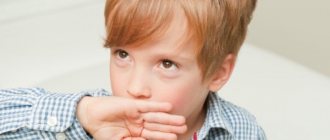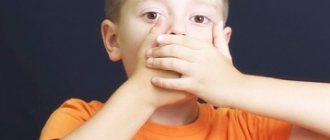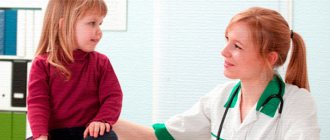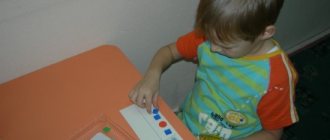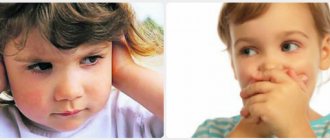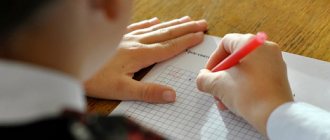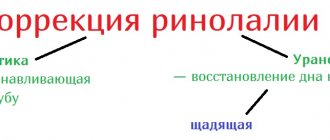Article:
Apraxia in speech therapy is a movement disorder that involves problems with the pronunciation of sounds, syllables and words.
The defect is not caused by muscle weakness or paralysis, but by pathological dysfunction of the brain. The child wants to pronounce a phrase, but the movements of his articulatory muscles are not coordinated.
Apraxia is distributed on a large scale throughout the world. Every year the percentage of children suffering from this diagnosis doubles. Approximately 10:1000, this number of patients are registered with apraxia.
Etiology, risk factors
Manifestations of apraxia are associated with damage to the parietal, frontal lobes of the cerebral cortex, and corpus callosum. The following pathologies can provoke this condition:
- dementia arising from chronic lack of blood circulation;
- traumatic brain injuries;
- encephalitis;
- Alzheimer's disease;
- brain tumors;
- Parkinson's disease.
If you have one of the diseases described above, you need to regularly monitor your health over time.
Building a Basic Dictionary
With this and other approaches, it is very important to always start with the basic vocabulary. This is the name of 10-20 words that are chosen by parents and a specialist. The main dictionary should include those words that are most often used in everyday speech (for example, “mom” and “dad”), have a special meaning for the child (for example, “train”, if the child really loves trains), and indicate the most common actions (for example, “eat”, “go”, etc.) and which are easiest to imitate (depending on the child’s skills).
Together with a specialist, the child will practice pronouncing these words in structured lessons. At home, you will practice saying these words in natural situations when the child encounters these people, objects or actions throughout the day.
As with any new skill, constant repetition and practice is the best way to improve results and help your child become more independent. At first, your child may need help pronouncing the word. Then gradually she learns to say it on her own without your prompting. After this we can enter a new word to form a phrase and so on.
Typically, therapy for apraxia is a combination of all of these approaches.
Clinical picture
The disease is characterized by a number of signs at different ages; the diagnosis is made after a comprehensive examination. The main symptoms of apraxia in children:
- lack of babbling;
- the child begins to speak late;
- limited reproduction of sounds with difficulty connecting them;
- replacing phonemes or omitting difficult ones to pronounce.
After the speech formation period, errors in sequence may occur less frequently. Imitation is difficult for a child, but in this case it is easier to understand him. Short phrases are easier for him. As with stuttering, anxiety makes communication difficult. As a result, a complex of deviations leads to delayed language development, memory impairment, and difficulties with fine motor skills. Other problems include oral sensitivity, which may cause your child to not like brushing their teeth or chewing crunchy foods. Apraxia also leads to difficulties in mastering written grammar and poor reading.
Despite the initial absence of problems with mental development, children subsequently become aggressive and negative mental changes are noted.
In speech therapy, this term is used in relation to aphasia, cortical dysarthria, and motor alalia. The deviation may be general in nature, affecting only oral, articulatory or spatial characteristics.
General apraxia is characterized by the inability to coordinate hand movements and, as a result, the inability to use objects for their functional purposes. In the oral form of the pathology, the muscles innervating the speech organs do not move. Apraxia of speech is manifested by incorrect reproduction of sounds: there are various errors in their pronunciation and problems with phonemic perception. In the monotype, apraxia is rare; it is characterized by a mixture of manifestations.
Differences in the course of pathology in adults and children
The child makes more mistakes when speaking, but the neurological symptoms are not clearly expressed. At the same time, the causes of apraxia in older people are injuries and brain tumors, circulatory disorders, which casts doubt on the diagnosis itself. If we are talking about a congenital pathology, doctors assume its hereditary nature, and a theory is developed about an anomaly in chromosomes and a violation of metabolic processes.
Apraxia of speech is considered a motor speech disorder. What other symptoms should you pay attention to? Patients with apraxia have a stiff gait and small steps; it is difficult for them to perform ordinary daily activities: getting dressed, making the bed, combing their hair, etc. This is not necessarily a feature of apraxia, but consultation with specialists is necessary.
Classification of apraxia by type of reaction to internal and external stimuli (A. R. Luria):
- kinesthetic form - lack of connection between body position and movement; for example, due to the fact that the patient does not feel the position of his fingers, he cannot show how to pour tea;
- kinetic is the absence of automation of actions, pauses occur, human movements are angular;
- the spatial view is associated with a violation of orientation, its subtype is constructive;
- the regulatory form consists of unconscious, uncontrolled actions; it is difficult for a person to coordinate them.
Psychoneurologist G. Lipmann also distinguished ideomotor and ideational forms of apraxia. With the ideomotor type, the patient understands what needs to be done, but skips some actions or does not complete the process. The ideational type is more often found in combination with the regulatory one and is characterized by the fact that a person cannot remember the meaning of performing an action, and subsequently does not control the correctness of his actions. Ideational apraxia differs from ideomotor apraxia in that the patient retains the ability to imitate, which greatly facilitates communication.
Separately, speech therapy deals with eyelid apraxia, the symptoms of which are difficulty opening and closing the eyes. There is no infectious cause for this condition, blepharospasm or damage to the facial nerve. The pathology manifests itself in a one-sided way: it is difficult to open or close the eyelids. As a rule, complications are associated specifically with opening the eyes, so the patient has to wrinkle his forehead, throw back his head, or pull up part of the eyelid with his fingers.
Symptoms of apraxia
Symptoms characteristic of apraxia depend on the type of disease and are as follows:
- inability to control facial expressions;
- inability to draw simple shapes;
- difficulties with choosing and using tools;
- problems with performing a set of coordinated movements (tying shoelaces);
- inability to make precise movements with your hands or fingers;
- inability to get dressed;
- shuffling gait;
- slouch;
- inability to step over an obstacle.
If you notice similar symptoms, consult a doctor immediately. It is easier to prevent a disease than to deal with the consequences.
Diagnosis of the pathological condition
Who diagnoses the disease? To assess speech development, an audiologist is involved, who must assess the condition of the hearing organs and exclude this factor as the cause of the disorder. The speech therapist checks the characteristics of oral speech, motor skills, and melody. Oral-motor assessment criteria:
- checking the muscle tone of the speech apparatus;
- development of coordination;
- orderliness of muscle movements.
The specialist observes the patient while performing speech therapy tasks and in functional situations. The test of melody lies in the ability to change intonation and pauses. An important criterion for speech development is the patient’s ability to conduct a dialogue, to the extent that what he says is understandable to others.
Making a diagnosis begins with studying the medical history and analyzing the patient’s complaints. Primary attention is paid to the articulation of the eyelids, the ability to perform simple everyday actions (for example, unfastening and fastening buttons). Already visually, a specialist can guess the specifics of the disorder. Apraxia is confirmed instrumentally after hardware diagnostics of the brain.
Possible consequences and complications
The lack of treatment aimed at restoring and improving the quality of a child’s speech threatens the development of the following complications and negative consequences:
- violation of the child’s socialization;
- progression of dysfunction of the facial muscles, which is responsible for the mobility of the lower jaw, lips and tongue (this complication will only aggravate the existing signs of oral apraxia);
- the need to receive individual education due to the lack of ability to reproduce words and correctly construct sentences;
- retardation in physical and mental development;
- lack of communication skills with peers and other people around them;
- the emergence of a tendency to aggression, the emergence of outbursts of rage and signs of an unstable psycho-emotional state due to limited abilities to express thoughts;
- the development of complexes and self-doubt that appear in a child due to incorrect reproduction of words and sounds, as well as ridicule from other children;
- preservation of speech apparatus defects, which remain with children at all stages of their growing up, significantly reducing their quality of life.
Apraxia is a severe neurological disorder that develops due to focal lesions in individual areas of the central nervous system. In speech therapy, this disease is characterized by oral apraxia, the symptoms of which are manifested by impaired mobility of the facial muscle tissues responsible for the synchronous interaction of the lips, lower jaw and tongue.
The main symptom of this disease is that the child completely or partially lacks the ability to reproduce most sounds and words. An audiologist and speech therapist are involved in diagnosing pathology.
Principles of treatment
For therapy to be successful, classes should take place up to 3-5 times a week. Individual lessons are preferable to group exercises, especially at the initial stage. Subsequently, subject to positive dynamics, tactics can be changed. Parents of a child with apraxia must be patient and actively participate in the development program. A favorable family environment facilitates the treatment process.
Therapy for apraxia should begin with eliminating the cause of the pathology, that is, treating the underlying disease.
In addition to taking medications according to an individual regimen for each patient, physiotherapeutic methods help improve the quality of life. If we are talking about the oral form, classes with a speech therapist are necessary. The prognosis is favorable, of course, subject to systematic treatment and exercise. Close relatives should be patient with the manifestations of the disease and the patient’s lifestyle, and help him in everyday life.
There are no special recommendations for preventing the disease. They are common. This includes a healthy lifestyle, a balanced and rational diet, and timely examination by a doctor in the presence of complaints and chronic infections. In case of health problems due to vascular problems, it is necessary to monitor blood pressure levels.
Gesture prompts
Another approach is to use visual gesture cues. The parent or therapist touches their mouth when they make a certain sound. For example, we can bring our index finger to our lips and move it away when we say the sound "p". The prompt draws the child's attention to how the lips form a certain sound.
We will use more than one clue when we say a whole word to show the difference between the sounds in a word. The combination of visual and verbal cues helps the child focus, understand and pronounce the word better.
This type of prompting can be especially helpful for children with autism, who often tend to be visual learners. However, this method requires that the child can pay attention to the cues and imitate them.
Causes of dyspraxia in children
If in adults a violation of praxis (apraxia) is caused mainly by cortical lesions, then in children a more important role is played by the timely maturation (or non-maturation) of subcortical structures. Therefore, developmental dyspraxia is often of a nonspecific nature (several types of praxis and general motor skills are impaired) and is accompanied by disturbances in sensory development and emotional-volitional and behavioral disorders. Among the factors in the development of dyspraxia are the pathology of pregnancy and childbirth and the pathology of the newborn period.
Today, there are two forms of dyspraxia from the point of view of etiology. The primary form is due to the immaturity of the motor analyzer itself, that is, those parts and areas of the brain, as well as the neural pathways that form the action program. Next, motor neurons sequentially transmit a signal to the muscles, and the subcortical parts of the brain automate typical movement programs, such as “tying shoelaces.”
The picture shows how signals move in neurons from the motor cortex of the cerebral hemispheres down through the brainstem, along the spinal cord, forming the so-called pyramidal tract. This is a large bundle of nerve cells that makes conscious voluntary movements possible.
Another form of dyspraxia is the so-called secondary dyspraxia. They are caused by a violation of the processing and integration of sensory information in the child. The very first form of thinking in a child is sensorimotor. Obtaining full sensations is possible only in dynamics, when a child can turn his eyes, head, roll over, pull himself up, sit down, pick up an object of interest, lick it, smell it. Later - crawl, approach, run up. All small and large movements help people experience the world in its entirety. But the sensations themselves from all senses - vestibular, proprioceptive (muscular), kinesthetic, visual, auditory - give the psyche information on how to build a scheme, program, sequence of movements, and position the body in space. The sensorimotor basis, which gradually accumulates in him, allows the child to form a picture of the world around him, a diagram of his own body. And already on this basis, a semantic (notional) field is formed in him, which is mediated by a sign (word), that is, speech develops and then verbal intelligence, higher forms of thinking. Thus, with various forms of dysontogenesis, both dysfunction of sensory integration and dyspraxia develop as two sides of a single process of cognition of the world.
Secondary dyspraxia is more common than primary dyspraxia, and the clinical picture is more severe.
Both groups of praxis disorders in children were studied and described in their article “The problem of diagnosing developmental dyspraxia in childhood” (2011) by neurologist, Doctor of Medical Sciences Yu. E. Sadovskaya et al. She cites statistics that in the secondary form of dyspraxia, the following concomitant disorders are much more common than in the primary form: deficits in control of emotions and behavior, communication and sensory deficits. Delayed speech development, speech and cognitive deficits occur equally often in primary and secondary forms of dyspraxia
It is also important to note that with the secondary form, children more often try to avoid completing a task, show negativism, experience psychological difficulties, feeling different from everyone else. That is, social adaptation in children with secondary dyspraxia is usually difficult
Their motor defect is more extensive, affecting more types of voluntary actions (in the primary form it is more “pointed”).
Prevention
Preventive measures that effectively help prevent this problem have also not been developed. Despite this, there are a number of recommendations that significantly reduce the risk of the occurrence and development of movement disorders:
- giving up bad habits and alcohol;
- make regular walks in the fresh air and exercise;
- regulate your diet;
- eat a balanced diet, consume only healthy foods and in quantities necessary for the body;
- visit the hospital regularly and undergo a full examination;
- Monitor your blood pressure and if surges are observed, it is better to consult a doctor about this problem.
Apraxia is a rather complex and serious disease, as a result of which a person loses the motor function of certain organs or parts of the body, and it is difficult for him to carry out even the most basic manipulations with objects.
People suffering from this disease are dependent on society, in particular on family and friends, since they are simply unable to perform certain operations. Be healthy!
Speech correction for sensory aphasia
The main task in acoustic-gnostic (sensory) aphasia is the restoration of phonemic perception and understanding of simple speech instructions (for example, raise your hand). Using intact analyzers (visual, motor), non-speech forms of work are used: copying short words from pictures, gestures.
Exercises
- Work on restoring phonemic hearing (special exercises) is carried out using plot pictures labeled below. First, two words of contrasting length are taken, for example, car and house. “Show me where the car is and where the house is.” The patient correlates the sound image with the letter image.
- At the same time, work is underway to perceive the sound of words during the process of copying. Then pictures are taken with words of the same syllable structure, but different in sound (na-sos, zabor).
- At the third stage, words with the same syllable structure and different sounding first (mak-rak) or last sounds (les-lion) are taken, and the patient is asked to choose a picture with a word that begins or ends with one sound or another. Then he is asked to fill in the missing letters in the words.
Sound restoration work lasts 2-3 months
, then the skills are consolidated in speech, restoring the subject relevance of the word. For example, select all the wooden objects, all the clothes or shoes in the picture. In addition, the ability to read analytically and globally is restored. Work is underway to understand the semantics of words by selecting definitions for words, differentiating homonyms, homographs, homophones, selecting antonyms and synonyms for words.
An effective technique for sensory aphasia is copying text.
, which gives the patient the opportunity to find the right word in his mind, coordinating it with others. At the same time, reading restoration is underway.
Up
Work with acoustic-mnestic aphasia
In the case when the patient has impaired auditory-verbal memory, treatment (corrective work) is carried out based on visual ideas about the signs of the object.
Exercises
- At the first stage they work on restoration subject assignment of words
.
They show the patient pictures of objects and ask them to arrange the captions for them or select the desired one from the list of objects. For example, “an ambulance arrived...”; “I went to the grocery store...”, etc. They explain the functional purpose of the objects and ask them to choose from a variety of pictures those that best suit the situation, for example, a family having lunch or a walk in the forest. In parallel with this, auditory dictations
of two or three words are carried out based on plot pictures.
We are working on a body diagram:
show the body parts in yourself and in the picture according to the instructions. - At the second stage they are working on restoration situationally determined speech
. The patient follows the instructions, points to the named object, fills out a questionnaire, and conducts a situational conversation. Subsequently, the patient is asked to repeat a series of words or automated series, for example, count to 10, identify and complete the missing element of an object, for example, the spout of a teapot, etc.
- Work is also underway on understanding the ambiguity of words
, selection of synonyms, antonyms, homonyms, compiling a story based on plot pictures, retelling the listened text. Preservation of phonemic hearing and understanding of the sound-letter content of a word allows one to compose detailed written statements from the very first days of correctional work, preventing poor vocabulary and agrammatisms.
Up
Speech correction (treatment) for semantic aphasia
The main task of speech therapy work is to eliminate difficulties in choosing names
to subjects, enrichment of vocabulary and syntactic structures of statements. Reliance is placed on intact analyzers: vision, auditory-verbal memory, and the planning function of speech.
Exercises
- First of all, work is underway to overcome spatial agnosia
: restoration of the body diagram, overcoming violations of visual-spatial perception, restoration of the connection between a word and an object image. Constructive-spatial apraxia is corrected through teaching the sequence of dividing a drawing into certain segments. To understand the names of objects, it is necessary to compare the various properties and functions of a whole group of words, breaking them down into categories: furniture, clothes, dishes, etc.
- Also defined community of words based on their root part
(forest, forester, lumberjack), according to suffix characteristics (table, knife). Work is underway on understanding synonyms, polysemantic words, the figurative meaning of a word, restoring the cause-and-effect relationships of an event, differentiating prepositional-case constructions (“the mother fed her son, who ate?”), composing complex and complex sentences, explaining persistent speech expressions, interpreting proverbs , catching logical and grammatical errors made in the text.
- To overcome acalculia, the patient is asked to decide logical and mathematical problems
, clarify the rank of a number (tens, hundreds), reinforce the concepts of “minus”, “plus”, solve arithmetic problems. When writing letters in mirrors, the emphasis is on restoring the patient’s orientation in different arrangements of objects (left, right), where to start writing the letter, in which direction it “looks.”
Up
Speech restoration in afferent motor aphasia
Overcoming speech difficulties in afferent motor aphasia relies on the preservation of visual and acoustic perception.
Exercises
- In a roughly expressed form, work is first carried out on speech disinhibition
, to overcome embolophrasia, highlighting the first articles in words. Before causing a sound, the patient must “read” it from the lips, from the tongue. It is more effective to start work by calling contrasting sounds: a, k, u. For better assimilation, the speech therapist uses diagrams for each sound: a - large circle, y - narrow circle, p - wavy line, etc.
- After consolidating articulation skills, they move on to pronouncing a series of sounds
, to sound-letter analysis of a word in order to avoid rearrangements and replacements of sounds in a word. Used: conjugate speech, the speech therapist together with the patient pronounce words, and then stable expressions; reading automated series; reading and recording dictation of individual sounds; forming words from a split alphabet.
- Then move on to reflected utterance
words With the help of dialogue, they work on situational understanding of speech and call for answers.
-Are you hungry?
- Yes, yes.
-Are you going to eat?
- Will.
-Will you have soup?
- I'll have soup.
In addition, work is underway to restore analytical reading and writing.
Up
Work with efferent motor aphasia
The main task is to restore the kinetic motor program, overcome inertia in switching from one articulatory structure to another, and restore the clarity of oral and written statements.
Exercises
- To do this, written tasks are used in which you need to choose correct sequence of syllables
in a word. For example, Le (rtstvo, ka), mo (twa, whether). In case of severe violation of reading and writing, they begin to work on adding syllables from a split alphabet, composing first two and then three syllable words (vo-da, so-ba-ka). For ease of reading, phrases can be translated from horizontal to vertical. Conjugate reading of words with a certain rhythmic structure is practiced. Using the preserved speech planning function, they draw a diagram or plan of a word or phrase that allows them to overcome the difficulties of switching from one syllable to another, perseveration and echolalia.
- Overcoming agrammatisms is achieved by adding endings
, insertion of prepositions, restoration of the semantic structure of the word. When restoring expressive speech, the child is given the task to complete the phrase: “I changed the bed sheets...” or to tell why, what item is needed.
- To develop verbal vocabulary it is used drawing up any plan
or daily routine: “I got up, got dressed, washed....” etc. If reading is completely impaired, then special alphabets with pictures are used: A - watermelon, B - wolf, etc. Restoration of reading is carried out in parallel with sound-letter analysis of words. In the later stages, the patient is advised to solve simple crossword puzzles.
Up
Corrective work for dynamic aphasia
The main task in this form of aphasia is to restore the programming function
speech.
Exercises
- The patient is advised to draw up action plan
, a program of statements based on questions, diagrams, a series of plot pictures with increasing action. An aphasic must be able to determine the sequence of actions of the hero of the pictures, be able to classify objects using the example of a group of images: furniture, transport, etc. The speech therapist creates conditions for speech activity, conducts role-playing conversations, playing out this or that situation: “The Clothing store is located to the right of the pharmacy and to the left of the grocery store, how can I get from the opposite side of the street first to the pharmacy, and then to the store where I need to buy bread".
- The patient is also taught to overcome difficulties in understanding the figurative meaning of words,
They are asked to convey the doctor’s request, compose a story on a given topic, and retell the text according to a preliminary plan.
- Speech activities
It also helps to discuss the events of the day, quickly switching from one topic to another: what happened the day before, what will happen tomorrow.
- In parallel, written work is being carried out on restoration of missing parts in the text
speech, correct use of prefixed verbs. At the final stage, an essay is written based on a series of pictures, statements, powers of attorney, and letters to friends are drawn up.
Up
Yulia Savelyeva
